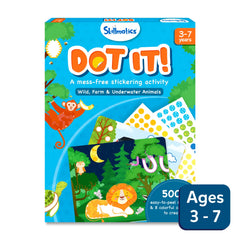
An Overview
In the age of violent video games and fight scene filled movies, parents are often worried that their child’s behaviour is increasingly aggressive. And while aggression may be an essential survival mechanism, increased frequency of these behaviours may lead to it becoming maladaptive. Understanding what this aggression looks like and what the underlying cause of it is can be the key for parents to deal with it effectively.
What Does it Look like?
Aggressive outburst in children can take numerous forms. It can be physical and include hitting, kicking or even biting. Alternatively, it can involve verbal outbursts, tantrums, and attempts to use violence or threats as means to an end. In older children, especially females, aggression can be more invisible and will involve manipulation. Most of the time these aggressive behaviours are a consequence of children’s frustration and inability to deal with emotions correctly and are expected. However, when they become frequent or part of their behavioural pattern, these behaviours can be termed as aggression. This aggression can either be proactive or reactive. Proactive aggression refers to those aggressive behaviours that are performed in order to achieve some personal gain, while reactive aggression is performed in response to a perceived threat.
What Causes it?
Biological Causes: Being aggressive is one of the innate tendencies of any human being and is an essential survival mechanism. In the required circumstances, many will resort to aggression. Therefore a lot of aggression stem from biological causes. While research suggests that girls and boys are equally aggressive, girls employ relational aggression strategies while boys are more overtly aggressive. Studies done on twins have also shown a salient link between genetic factors and aggression. The child’s temperament and emotional traits, hormone levels as well as prenatal intrauterine environment can also influence how aggressive a child is.
Environmental Factors: Albert Bandura’s Social Learning Theory proves that aggressive behaviours are especially modelled by observation. Family, friends and those in the child’s immediate environment have a heavy influence on the kinds of behaviours the child picks up. Not only do children witness these behaviours and learn from them but also focus on the outcomes and repercussions of these behaviours. Furthermore, when children get what they want by engaging in aggressive behaviours, they are more likely to continue these behaviours. Children are susceptible to aggression by violent media and television. Pre-schoolers are most likely to be impacted by exposure to this sort of content.
What you can do about it?
- Stay calm: Dealing with a child’s aggressive behaviour can often be a source of stress and anger to parents. It is essential to remain calm in response to these behaviours and even model emotional regulation. Teaching your child by example is one of the best ways to curb their behaviours.
-
Immediately reprimand aggressive behaviours: Threats and warnings only show your child that their behaviour is excusable. Instead, don’t be afraid to take immediate action including time-outs and loss of privileges.
-
Don’t give in to tantrums and reward positive behaviour: Giving into tantrums rewards and reinforces the negative behaviour. Thus your child is more likely to use a similar tactic to get what they want in the future. Therefore it is important to remain firm in your decisions. Rewards and praise are effective when your child performs a positive behaviour as it encourages them to continue doing the same. Don’t hesitate to praise or reward them when they react well to situations. These rewards shouldn’t be materialistic or financial.
-
Teach replacement behaviours: Aggressive behaviours often occur because children are unable to regulate their emotions or manage their behaviours. Teaching your child these skills can help replace their aggressive behaviours. Another effective strategy is naming your child’s emotions. This validates how they are feeling and helps them understand and identify what they are feeling.
- Get professional help: Sometimes aggression occurs due to mental health conditions or behavioural disorders. If your child’s behaviour continues to get worse, becomes unmanageable and/or starts interfering with their daily functioning seek help from a professional.









